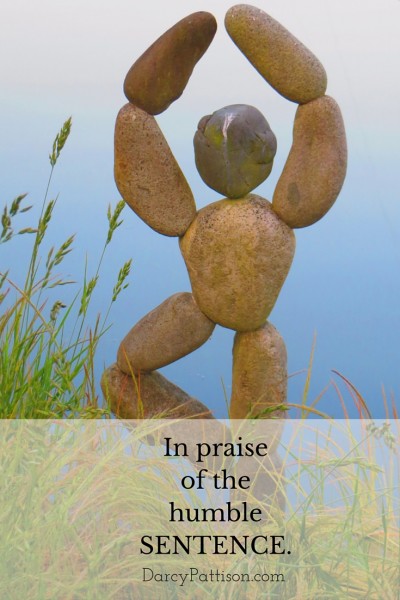Voice is the quality of writing that lets a reader see the author behind the work. It’s what makes a piece of writing unique so that you and only you could have written this piece. I don’t look at it as a mystical thing; instead, I look to the tools that writers have to work with: words, sentences, and longer passages. Here are three ways you can use sentences to help you find the best voice for your story.
- Write ten openings. It’s said that the first word and first sentence of a story setup everything that follows. If THIS is the first sentence, what sentence MUST follow? What does the story and your storytelling voice DEMAND for the second sentence?
For example, let’s take a couple sentences and see what they demand next.
It was a dark and stormy night.
I would expect something about the night, the storm, more on the setting, the character’s reaction to the storm, and so on. That first sentence demands that the second comment on the night or the dark or the storm or the character in the situation. It would be a non-sequitur to follow that sentence with something like this: The bunny hopped through the sunlight.The first sentence narrows the possible choices to a dozen or so topics. And the second sentence will narrow the choices even further. By the third, the story is locked in for at least the space of a couple paragraphs; of course, those paragraphs will lock in the next several paragraphs and so on.
This is why it’s so valuable to write multiple openings to a story. Each opening will set up topics, characters, settings, tone and voice that will send the story in a different direction. That’s what you want at first: options.
- Mimic a text. On the other hand, I’ve also found it helpful to choose a text that I like and mimic the sentence pattern.
Here’s the opening sentence from The Green Glass Sea, by Ellen Klages, a story about a girl whose father is working on the atomic bomb during World War II.
Dewey Kerrigan sits on the concrete front steps of Mrs. Kovack’s house in St. Louis, waiting for her father.
Sentence Pattern: Proper-Noun verb prepositional-phrase prepositional-phrase prepositional-phrase, participial prepositional-phrase.
My sentence: Darcy Pattison runs through the historic neighborhood on top of the hill across from Little Rock, hoping for a miracle.
You’ll find out a lot about your own writing style and your unconscious habits of writing. One friend always writes in complex sentence with lots of phrases and clauses; it’s appropriate for her complex non-fiction styles. But when she’s tried to switch to writing simpler picture books, it doesn’t work.
Imitating or mimicking another person’s sentence structure is an interesting exercise for learning more about your writing and for exploring different voices.
- Vary sentence patterns. Here’s an exercise I love. Take one page of your writing. Count the number of words in each sentence and write that number at the end of each sentence. Now, rewrite following this rule: each sentence must be at least plus or minus 4 from the previous sentence.
For example, if sentence #1 is 10 words, sentence #2 must be 10-4=6 or less OR 10+4=14 or more.
Let’s say, you went for a longer sentence, so sentence #2 is 16 words long. Sentence #3 must be 16-4=12 or less OR 16+4=20 or more.This forces you to vary the sentence lengths: 10, 16, 3, 8, 20, 2.
Those varying sentence lengths give your writing rhythm and add to the meaning of the words.
It’s a funny mechanical exercise that yields amazing results in your writing. Once, I tried to figure out why this one small thing should matter so much. I looked at some essays by students in eighth grade. Amazingly, their sentence lengths were uniform, almost all about 12 words long with the shortest about 8 and the longest about 15. Not surprisingly, the voices were bland.If you read The Tale of Despereaux by Kate DiCamillo, you’ll find some of the most variety in a text that I’ve seen. She writes one word sentence fragments, followed by 30-word sentences. Why is it a great story? Because she’s a great storyteller? Yes. But also because she has command of her words and language, especially the sentence variety.
As writers, we only have words, sentences and longer passages. Those are our tools. Milk sentences for all they can add to your story’s voice.

Thanks for the plus or minus exercise.